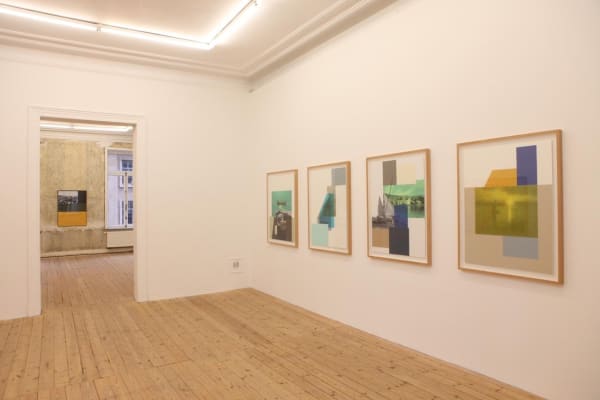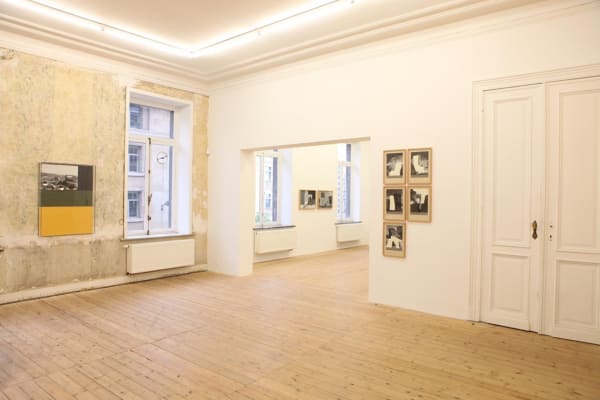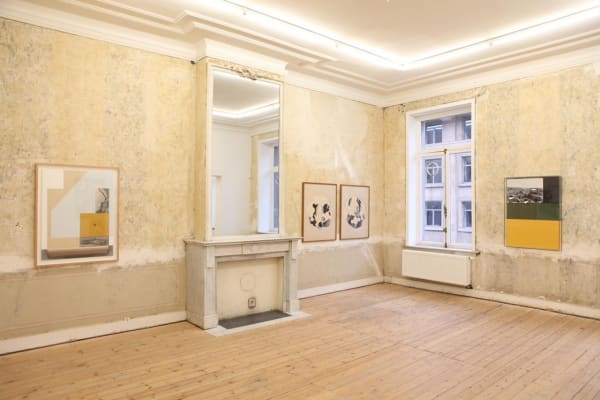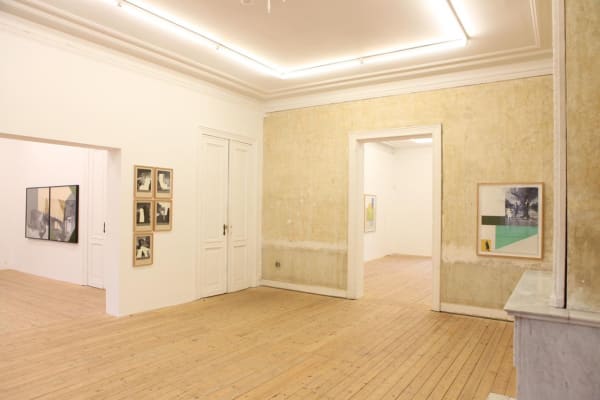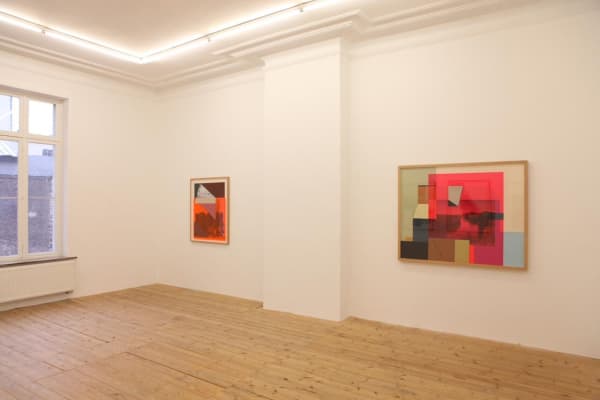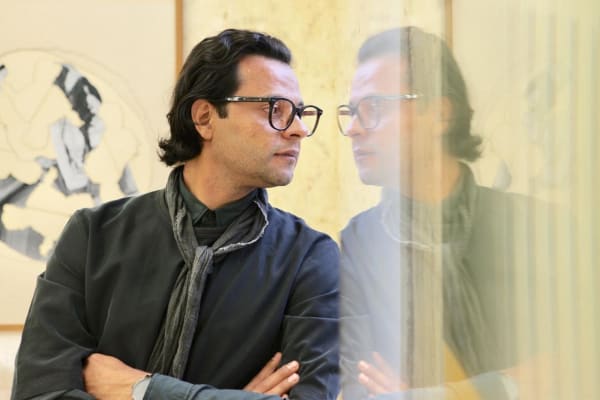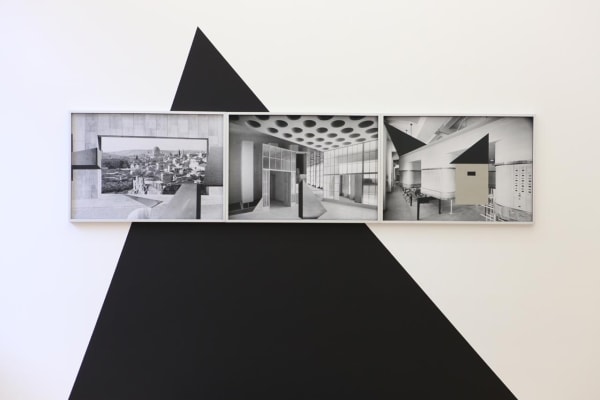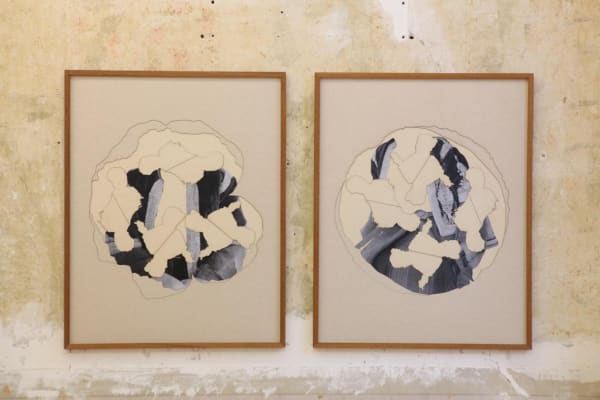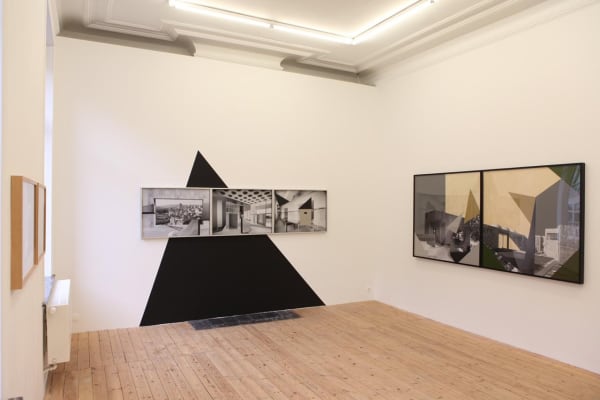Celebrated Palestinian visual artist, Hazem Harb is set to exhibit Hazem Harb 2016-2019 at Galerie Montoro12 Brussels, Belgium.
On display will be a collection of Harb’s works spanning several series created between 2016 and 2019, following the artist’s introduction of collage to his practice in 2015. Proposing a research-driven approach to each element of his work, Harb takes his inspirations from myriad sources that span from the wisdom of Salvador Dali to the words of prolific poet, Mahmoud Darwish. The artist is an avid reader who investigates architecture as a mode of imperialism, and delves deep into the archeology, folklore, and historical past of his native culture. His collages transcend aesthetic brilliance, each fragment representing a piece of the puzzle, a rectangle of cold grey plexi-glass overlaid upon of a photograph of Jerusalem’s softer stone walls might, for example, represent the imposition of concreate Bauhaus structures upon the visual landscape. In this painstaking manner, Harb creates his collages by slicing and layering archival photographs, building upon them with his own drawings, and found materials including maps and coins.
The selected pieces for this exhibition trace how Harb’s aesthetic has changed and evolved over the last four years, yet the topic of the artist’s exploration remains constant. He keenly uses his space as an artist to reaffirm history, making sense of the intricacies of personal and collective memory and the sense of longing that invariably stems from displacement.
Physical photographs might be forgotten, destroyed or disguarded and antiquities may face erasure, in-line with political changes, hegemony, and shifting borders yet Harb’s collages draw them together, underscoring their importance and establishing their significance in the present day. This artist’s practice questions our very modes of recording and understanding history, divulging the ways in which it can be manipulated. In doing so, he opens up a wider question, considering how our memories are formed and the role that politics and power play in shaping them.
The selected works on display investigate the conflicting incarnations of Jerusalem, a place that holds much significance and varied meanings across faiths, races, geographies and generations. In Bauhaus as imperialism, series 2# 2019 there’s beauty in difference, as looming forms like security barriers and glimpses of Brutalist architecture, obscure views of the Dome on The Rock that could reflect the disruptive landscape of today. Stern concrete and harsh geometrical lines shoot out from Juruselem’s passive forms. The cutting edges and imposing appearance do, upon first glance, feel like they have little to do with preconceived notions of the Holy City but the layers of black and white photographs do, in fact reveal the first post room built following the occupation in 1938. And in Harb’s Occupation Monuments, series 2016 jolting pieces are sliced from the composition begging the question, what is missing from the picture? What was there before, and now is gone?
“As an artist I made a conscious decision that my work must have meaning,” says Harb. “I have a responsibility to preserve the visual culture of my country as it reaches the point of exclusion. Beyond this I intend that my work should have universal relevance, the topic of home and its collective and individual significance is none more relevant than today in our time of globalization, new technologies and unpredictable political climate.”
On Hazem Harb’s work Loïc Le Gall, Assistant Curator of the Department of Contemporary Art and Prospective of Museum Centre Pompidou states:
“In 1912-1913, George Braque and Pablo Picasso produced the first pictorial collages. This recent technique in the history of art is intimately linked to politics, developing in all the arts from drawing to photography and, of course, by literature and music. Picasso already inserts press clippings dealing with politics; later, Expressionists George Grosz, John Heartfield, and Otto Dix set up the practice as a full-fledged weapon of war. Nowadays, Hazem Harb rehabilitates this practice by seeking to materialize a political and historical thought, and by producing forms that emerge and evoke architecture.”
